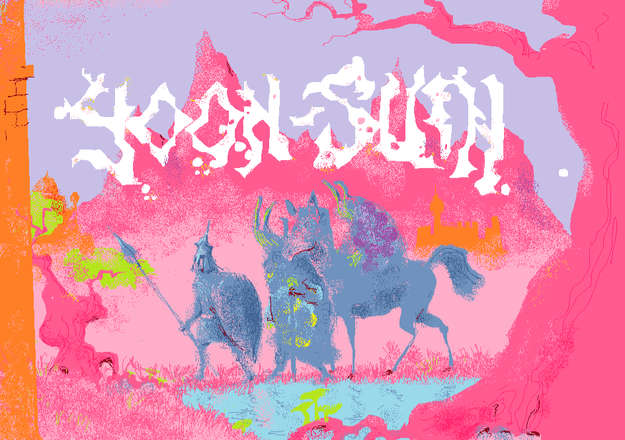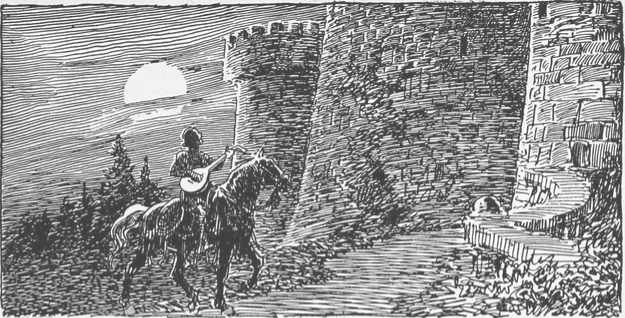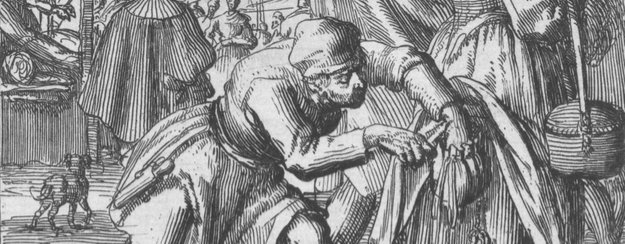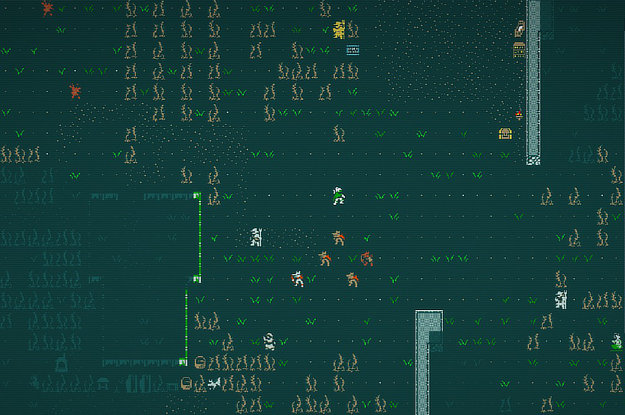
There’s a Yoon-Suin 2nd edition on Kickstarter just now. Includes 12 adventures sites apparently. And it’s funded already!


There’s a Yoon-Suin 2nd edition on Kickstarter just now. Includes 12 adventures sites apparently. And it’s funded already!
So Wizards of the Coast have posted an update on their OGL plans.
While putting core mechanics in the Creative Commons may seem like a gift to the community, the reality is it’s probably stuff that they couldn’t restrict others from using anyway.
More significant is their continued plan to deauthorize 1.0a, so that all future publications will have to use OGL 1.2. Is that so bad? See for yourself.
https://www.dndbeyond.com/posts/1432-starting-the-ogl-playtest
Unless you’ve been living under a rock, you’ve probably heard that the current owners of the Dungeons & Dragons RPG, Wizards of the Coast, are busy tickling the dragon’s tail. It’s even hit mainstream media.
Firstly they indicated to shareholders that the brand is “under-monetized” whilst being one of the largest, if not the largest, source of revenue for their corporate overlords Hasbro.
Then came an announcement heralding a bespoke virtual table top for playing D&D in a “walled garden” which would facilitate the kinds of micro-transactions that have made certain videogames extremely lucrative.
A subsequent leak of a proposed draconian revision of the Open Gaming Licence – a licence which has allowed 3rd party publishers to produce D&D compatible work that includes open gaming content for over 20 years – claimed that:
“You agree to give Us a nonexclusive, perpetual, irrevocable, worldwide, sub-licensable, royalty-free license to use that content for any purpose.”
OGL 1.1 leak on Pastebin or in PDF on battlezoo.com
This, amongst many other restrictive and punitive additions to the Open Gaming Licence has made many in the RPG community anxious and annoyed. The question is, can Wizards of the Coast revoke OGL 1.0a, that has widely been perceived as irrevocable since its inception, and force creators to accept a worse deal? Ryan Dancey, one of the architect of the OGL, certainly seems to think not.
I’m no lawyer but here’s my thoughts on the OGL issue:
“Updating the License: Wizards or its designated Agents may publish updated versions of this License. You may use any authorized version of this License to copy, modify and distribute any Open Game Content originally distributed under any version of this License.”
OGL 1.0a at opengamingfoundation.org
OGL 1.0a was authorized (that is, not a draft). So even if the OGL is updated you can use previous versions of the OGL, including OGL 1.0a. Ok fine.
“VIII. TERMINATION. This agreement may be modified or terminated.
OGL 1.1 leak on Pastebin or in PDF on battlezoo.com
A. Modification: This agreement is, along with the OGL: Commercial, an update to the previously available OGL 1.0(a), which is no longer an authorized license agreement. We can modify or terminate this agreement for any reason whatsoever, provided We give thirty days’ notice.”
“Content already released under 1.0a will also remain unaffected.”
An Update on the Open Game License (OGL) on the D&D Beyond website
A license is either authorized or not. If content can exist under OGL 1.0a, then the sub-text is that OGL 1.0a is in fact authorized, despite their claims to the contrary. And given the amount of corporate doublespeak on display in the full D&D Beyond statement, you shouldn’t trust them to be 100% honest about this. They’re in it for the money. Oh and to eliminate the competition.
According to Wizard’s statement on the D&D Beyond website one of their core principles is:
“to ensure that the OGL is for the content creator, the homebrewer, the aspiring designer, our players, and the community—not major corporations to use for their own commercial and promotional purpose”
An Update on the Open Game License (OGL) on the D&D Beyond website
All except one major corporation of course.
They are trying to strong-arm people to change licenses, from an open, irrevocable one to a restrictive, revocable and onerous one. Why would anyone agree to have less rights? I wouldn’t.

I was reading OSR Grimoire’s recent illuminating post, Cook/Marsh Expert: The Adventure, when I was reminded that there was a post about castles in OD&D languishing in my drafts folder. So without further ado . . .
In order to keep my brain ticking over, I thought I’d have a go at automating the castle occupant generation rules found in the original version of Dungeons & Dragons (OD&D). I’ve been finding it relatively easy to get the type of results that I’m after using Hex Describe, so I used it again for this project.
Castles are a bit of a big deal in OD&D and rightly so. They dominate the surrounding lands for 20 miles (4 hexs) in all directions and levy taxes on the villages within their barony. Adventuring parties that pass nearby will be intercepted by representatives of the castle in the following situations:
If so, they could be challenged, taxed or even magically compelled to complete a quest or die! If the party tries to avoid the interception, they may be pursued (if hostile: 3 in 6 chance; if neutral: 1 in 6). It’s likely that adventuring parties will eventually feel the influence of castle occupants in one way or another. The owners fall in to six categories and they can be quite interesting characters. Here’s an example of each:
NB For those of you who might not be familiar with some of OD&D’s nomenclature, Patriarchs are level 8 Clerics, and the following are levels of Fighting-Men: Hero (4), Swashbuckler (5), Myrmidon (6), Champion (7), Superhero (8), Lord (9).
I hope you’d agree that such owners would have quite a bearing on the surrounding lands and therefore on any characters that journeyed within their realms.
It’s interesting to note that the castle occupancy rules in D&D B/X Expert Rules are a pale imitation of those in OD&D and only make a passing reference to the flavour that the earlier ruleset effused.
Note that the men listed [a patrol of 12 at most] are only part of the castle owner’s forces. The rest of the force should include men and might even include special creatures such as trolls, or combinations such as superheroes mounted on griffons.
D&D B/X Expert Rules (X59)
Believe it or not, the Rules Cyclopedia is actually slightly blander in this regard.
Note that the men listed [once more a patrol of 12 at most] are only part of the castle owner’s forces and are simply the unit sent out after annoying travelers; the rest of the castle’s forces should include other men and might even include special monsters.
D&D Rules Cyclopedia (p95)
However to its credit, the Rules Cyclopedia does at least feature demihumans as possible castle owners on the Castle Encounter table (p98). But it’s still found incredibly wanting on the topic of castle occupants.
In conclusion, I would recommend reading OD&D, even if you don’t intend to play it. You might be surprised what you find!
I would be remiss for not mentioning Wayne Rossi’s excellent The Original D&D Setting for drawing my attention towards OD&D‘s implicit procedural setting. Go read that too!
FYI Full Metal Plate Mail by Leonaru is a well-presented retroclone of OD&D. If you’re interested in retroclones of this era of D&D its definitely worth a look.
I’m a fan of Bob Cordery’s The Portable Wargame. It provides a way to play conclusive and dramatic battles without getting bogged down in byzantine rules. The game suits sparring tabletop generals and the solo hobbyist. However in my efforts to play it remotely (eg on VASSAL), there is one particular aspect that I’ve been mulling over.
When a unit is hit, the defending unit rolls to see whether they must either:
nb Higher quality troops are more likely to have the choice of holding or retreating.
I like this rule as it gives the non-active player an opportunity to make tactical decisions during the active player’s turn. However for games that are played remotely, this is a potential snagging point if the players are not present at the same time. In such asynchronous situations, the active player may have to wait on the non-active player communicating their wishes before the active player’s turn can be completed. This isn’t arduous but it does slow the flow of each turn that involves combat. Which in a wargame, can be numerous.
So here are some thoughts on possible guidelines (which could be adopted if both sides are in agreement) to help determine what a defending unit will do, when given a choice:
You would of course have to agree before the battle, which locations were strategic positions. But hopefully this should be quite apparent whilst surveying the battlefield. Towns, bridges, hills, fieldworks and fortifications would be likely candidates. Woods overlooking open ground could be advantageous positions too depending on the map.
Hopefully these guidelines will be of use to anyone wanting to streamline their remote play, or indeed the solo gamer who sees merit in reducing the bias that they may have whilst playing “the enemy”.

A climactic standoff in the Korean War using my 2×1 Portable Wargame variant. Full campaign rules to follow!

The Alea iactanda est blog has done a fantastic job of translating some of the new content from the 2nd edition of Epées & Sorcellerie from French into English. However I did notice a few inconsistencies in the text of the Thieves article (you can read it here) which led me to do a little digging. Part of the translation reads:
“In addition, when he is prowling about on his own, a Thief adds his attack bonus to the normal surprise chance (1-in-6). For example, a Level 4 Thief would have 2 chances out of 6 to surprise his opponents. Carrying a light source cancels this bonus.”
Attentive E&S players will no doubt recall that the surprise roll in the English 1st edition differs from the aforementioned one:
“If in doubt about the surprise, consider the probability of surprise in an unexpected meeting to be 2 chances in 6.”
So something’s amiss here. Not having the French 1st edition to hand, I consulted the relevant sections in the French 2nd edition:
“De plus, lorsqu’il rôde seul, un Voleur ajoute son bonus d’attaque à la chance normale de surprendre les monstres (1 sur 6). Par exemple, un Voleur de niveau 4 aurait 2 chances sur 6 de surprendre ses adversaires. Porter une source de lumière annule ce bonus.”
“En cas de doute sur la surprise, considérez que les probabilités d’être surpris lors d’une rencontre inattendue sont de 2 chances sur 6.”
One doesn’t need to be a cunning linguist to figure out that the inconsistency in the surprise roll is in the original French text. It is not through any fault of the translator.
But there is more dear reader!
The keen eyes amongst you will have noticed that the example given, is also flawed. A Thief doesn’t gain an Attack Bonus until level 5 according to the table in the French 2nd edition (see below).

Strictly speaking the conclusion of the example is correct – if the chance of surprise used is 2 in 6 as mentioned in the Surprise quote. A level 4 Thief has no Attack Bonus, so their chance of surprise is still 2 in 6. However the 1st sentence in the example says that the normal chance of surprise is 1 in 6, so this makes the whole example unhelpful.
So for this paragraph to be consistent with rest of the text it should really be:
“In addition, when he is prowling about on his own, a Thief adds his attack bonus to the normal chance to surprise monsters (2 in 6). For example, a Level 5 Thief would have 3 chances out of 6 to surprise his opponents. Carrying a light source cancels this bonus.”
But of course there’s always the possibility that the standard surprise roll should indeed be 1-in-6. But upon referencing OD&D (Book III p9), I’d say that my proposal is probably correct.
“If the possibility for surprise exists roll a six-sided die for each party concerned. A roll of 1 or 2 indicates the party is surprised.”
I rest my case, M’lud.

It’s nice to have an open gaming table and welcome wandering greenhorns to the RPG hobby whenever possible. But I think it’s better to have a stack of pre-generated characters for a newcomer to choose from, than hold up the session while they roll up a character from scratch.
NB They can of course roll up their own character between sessions should they want to play again.
Anyhoo, with that in mind, I’ve been experimenting with procedural character generation for Epées & Sorcellerie of late. I’d seen folks use spreadsheets to automatically create randomly generated bits & bobs for RPGs, so thought I’d give making instant pre-gens a whirl.
Not being a spreadsheet wizard, it’s taken me a while to figure out how on earth to do it. I’ll spare you the technobabble for now – I’ll go in it in a future post. I really just wanted to share one of the first outputs. Poor Edward . . . he really is a hopeless character.
| Name | Edward |
| Race* | Orc |
| Age** | 27 |
| Alignment | Chaos |
| Class | Warrior |
| Level | 1 |
| HP | 3 |
| Cultural Origin*** | Civilised |
| Languages / Skills | Common |
| Read / Write | No |
* I prefer a humanocentric game but for the purposes of science I’ve included all types
** A houserule: 17 + level + 2d6
*** from E&S2 (English translation here)
So far so good. What could possibly go wrong?
| ABILITY | 2d6 Roll | Modifier |
| Strength | 4 | -1 |
| Intelligence | 7 | 0 |
| Wisdom | 8 | 0 |
| Dexterity | 3 | -2 |
| Constitution | 2 | -2 |
| Charisma | 5 | -1 |
He’s a brute in melee combat with his 4 Strength giving him -1 to hit *ahem*. Thankfully his Warrior’s Attack Bonus (+1) cancels this out. Phew!
As Edward has no armour, his base Armour Class is equal to his Dexterity. Unfortunately for Edward that’s 3 . . . so once you add in his shield, opponents only need to roll above a 4 on 2d6 to hit him. Oh dear. Though melee combat in E&S is based on opposed rolls – it’s only the highest roller that hits their opponent. So I guess Edward isn’t exactly nimble and if you can get past his average offences then he leaves himself open to a battering.
At least he can try and keep opponents at bay with his ranged javelin attack. Oh . . . That -2 Dexterity modifier isn’t going to do him any favours is it?
The nail in the coffin is his -2 Constitution modifier hampering every HD he acquires upon levelling. It helps hammer it home that he’s more than qualified to be cannon fodder.
I think he’s probably more of a danger to himself than anyone else. I can just picture him flailing himself in the face. Truly a force of chaos. And given that he’s 27 years old yet still level 1, I think it’s safe to say that he’s probably reached his peak. It could be that due to his size or savvy, he’s never mastered the art of defence, so he’s prone to getting duffed up which is reflected in his poor Constitution. As a result, he’s always the last to be chosen to ‘play for the local team’ and hasn’t gained any real experience. Or learned anything from those experiences that he has had.
I’ve grown rather attached to Edward you know. He’s too good to waste as a PC. I think he’s going in the NPC pile.
ps I realise Edward is a daft name, especially for an Orc. I just bunged a load of names in the generator to give it something to work with. For pre-gens I’d be tempted to leave the name blank so the new player can make it their own with minimal effort. But I’ll probably retool the generator as a hireling creator at some point, so it’s nice to have the function there.

Centaurs are pretty wild.
On the subject of centaurs, the original edition of Dungeons & Dragons says “Centaurs will be found in hidden glens. It is there that both their females and young are and where their treasure is hidden.”
OD&D also states “At worst these creatures are semi-intelligent“. B/X is pretty much in agreement and says they are “somewhat intelligent“. In both cases they seem closer to animal than man.
I realise that in a FRPG not everything has to follow the rules of nature or indeed make sense. But personally I just can’t get my head round the fact that they might reproduce, or indeed how. I’m more likely to have them be magical or divine creatures. Created as arboreal protectors by the Lord of the Forest or possibly chaotic liminal beings formed at the meeting of our world and the mystical.
Anyway… Centaurs. How do you do yours?

Caves of Qud is a science fantasy RPG and roguelike epic steeped in retrofuturism, deep simulation, and swathes of sentient plants. Come inhabit an exotic world and chisel through a layer cake of thousand-year-old civilizations. Play the role of a mutant from the salt-spangled jungles of Qud, or play as a true-kin descendant from one of the few remaining eco-domes: the toxic arboreta of Ekuemekiyye, the ice-sheathed arcology of Ibul, or the crustal mortars of Yawningmoon. Decide: is it a dying earth, or is it on the verge of rebirth?
I’m ashamed to say that although I’ve had Caves of Qud for quite a while, I’ve only recently started getting somewhere with it. I expect that like most folks who’ve tried it, I got killed pretty quickly, and left it for a rainy day when I’d have the time to get to grips with its wacky ways.
The thing is, it’s not actually hard to survive your first forays in Qud if you act like your life depends on it. Don’t expect to button-mash your way to victory when a troop of baboons takes a dislike to you. You best run!
To Freehold Games credit they’ve made Qud a lot more welcoming to newcomers than when I first started. There are now several pregenerated character types to help you get going.

Anyway here is my Noob’s Guide to Caves of Qud based on the things that I’ve picked up along the way. Who better to advise a noob than a noob mk II?
Let’s get going!
Using the number pad on your keyboard (and not the cursor keys) is really useful for moving and interacting in the cardinal AND intercardinal directions (that is NE, SE, SW, NW). The thing is, your number pad may not seem to work. If you have a problem moving using the number pad, then give it your NUM LOCK a toggle and try again.
There are a few other controls which make movement easier, once you get used to them.
This function is a godsend. Not only will it save your fingers from doing the donkey-work of exploring every nook and cranny, but you can discover lore that’s engraved on everyday objects.
I would recommend trying not to provoke common Neutral lifeforms. If their faction becomes hostile to you, then you’ll not be able to auto-explore whilst they are in view.
Useful to show the positions of lifeforms in view, and the location of objects that you’ve discovered whilst auto-exploring. You can easily miss cave entrances in the wilds unless you use this feature.
Speaking of which, caves aren’t added to your Journal or World Map automatically. So if you find a cave, you can add them manually by opening your Journal (J) and Add (+ on number pad) an entry. This allows you to fast travel to it – handy, huh? You might as well give it a memorable name while you’re at it.
As long as you aren’t lost on the surface, you can view and travel using the World Map. One square on the World Map is referred to as a parasang. Each parasang is equal to 9 game screens – there is one screen for each compass direction and one in the centre. Both the surface and sub-surface game screens are identical in size, so it’s possible to figure out where you are when you’re underground if you’ve been paying attention.
If you want a closer look at anything, then try LOOKING at it. It’s worthwhile looking at items in your inventory if you want an idea of how they might benefit you.
You can press SPACE to interact with things nearby. But if there’s more than one thing in a location, then it’s best to use CTRL+SPACE which is more thorough. NB You can interact with things in your location by choosing 5 (on number pad) as the direction.
Get (G), Open (O) and Chat (C) are useful interaction shortcuts.
You can carry both ranged and melee weapons. So do so. But remember it will take a turn to Reload (R) your ranged weapon when your ammo is depleted. You can sometimes buy yourself some time by moving away as enemies won’t always follow your every move.
If you’re determined to fight things, and it’s daylight, then you may as well equip a 2nd weapon rather than carrying a torch. You won’t always hit with it, but it may help. Using a buckler shield on your arm, isn’t going to hurt either.
There are lots of things that want to kill you. If in doubt, SPRINT. Also remember to use cover to your advantage. You can sometimes throw enemies of the scent if they lose sight of you. But if you’re planning an ambush from behind cover, then you’ll need to Wait (5 on numberpad) until the time is right.
And don’t fight Baboons, Irritable Tortoises or Turrets. They are a nightmare in early game. Snapjaws aren’t too bad as long as you don’t let them swarm you. Crocs are your best bet for easy pickings.
By default you can’t attack non-hostile lifeforms – if you try, you just swop places with them. However you can Force Attack non-hostiles and inanimate objects. This can be used to destroy cobwebs and even break down walls.
Time is a great healer. If you’re in a bit of a bad way, you could either Wait a turn at a time (5 on number pad) or Wait til Healed (‘).
It doesn’t hurt to have backup. Depending on your character type you may be able to Beguile or Proteslyze lifeforms to fight on your behalf. But if not, you can always try to persuade them to be your companion through if your reputation with their faction is high enough.
If you do gain a follower, then it can be useful to give them a name (Interact with them to get the option). It helps you identify them when they’re amongst a group of their own kind. They’ll also appear friendly if you Highlight (ALT) your surroundings.
You will get thirsty so always carry some fresh water. If you’re running low, it’s not too hard to get hold of some by selling some of your bits and bob (see TRADE below). All the villages that I’ve been to seem to have a local dish which you can snaffle a sample of from their communal kiln. If it gives you any desirable special effects (see STATUS SCREENS below). then it’s worth buying the recipe from the villagefolk.
As far as Cooking and Gathering skills go, I think Butchery is more useful than Harvestry. Vinewafers are cheap and plentiful and not really that appetizing on their own. All the good recipes that I’ve discovered so far include some kind of jerky. So you might as well stock up as soon as you can. For maximum efficiency, you can even toggle your Butchery skill, so that you automatically do the business when you find a corpse. Mmm mmm!
There’s so much more to the game than first meets the eye. I’d recommend getting familiar with the following status screens. It could be a matter of life or death!
You can either use the appropriate shortcut key or press TAB to open your Inventory and then 7 or 9 (on number pad) to tab through the various screens.
If you think that something’s up with your character, then try looking at Active Effects, which is a sub-page of your Character Sheet.
There are other status screens which are useful, eg Journal (J) and Quests (Q), but I think they’re not so important very early on when you’re mainly concerned with trying not to die.
I found trading one of the most confusing aspects of the game at first. The unit of currency seemed to be the Dram, which is water, but items also had a value in $. Trading is done via bartering – which is fair enough – but having two currencies to factor in to the equation was mind-melting to my tiny peabrain. The thing is, the answer is really simple. There is only one. Drams are $. DOH!
When trading, the difference between what you’re buying or selling is rounded to the nearest Dram, but not in your favour. So when you’re selling more than you’re buying, you may as well offer slightly more than a whole Dram, and when buying more than you’re selling, slightly less than a whole Dram to get the best deals.
Drams of water may be the unit of currency but water is heavy. And not that valuable. 4 Drams of water weighs 1#. I’m not sure what the unit is called but that’s the symbol for it – knowing Qud it’s probably something like Dongras. So if you find that you’re getting weighed down, then try buying items that are worth more but weigh less than water and pay for it with Drams rather than bartering. But don’t spend it all. You’re gonna need some fresh water to drink remember! Oh and if you find you’re packing too much meat to carry . . . it’s worth noting that raw giblets weigh more than preserved meat. So make some jerky at your camp fire!
I made a PDF of the keys that I used to get me going. You can download it here.